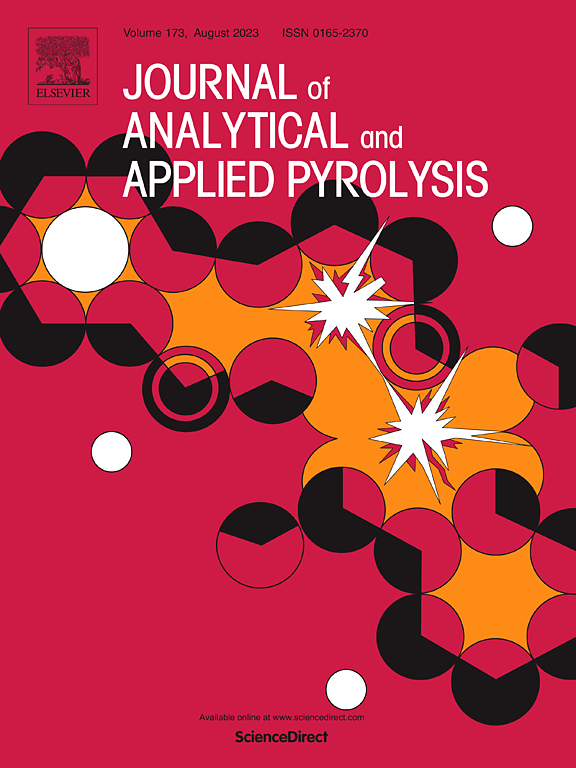Exploring the pyrolysis of Agave species as a novel bioenergy source: Thermo-kinetics, modeling, and product composition insights
IF 5.8
2区 化学
Q1 CHEMISTRY, ANALYTICAL
引用次数: 0
Abstract
The Agave economic chain generates a significant waste, which has potential for sustainable bioenergy through pyrolysis. However, the diversity and heterogeneity of chemical composition of Agave species may pose challenges. This study investigates the impact of species heterogeneity on the pyrolysis of three Agave species (Agave sisalana, Agave tequilana, and Agave wercklei), aiming to correlate pyrolysis and biomass properties. Solid characterization and Py-GC/MS were used to understand Agave physicochemical characteristics and organic group distribution in volatiles, respectively. A multi-step model and advanced numerical methods were employed for the kinetic study. The physicochemical characteristics showed similar values but a distinct distribution of inorganic compounds, predominantly composed of alkali and alkaline earth metals (6–11 %w.b.), potentially influencing the organic groups’ distribution in the volatiles. High relative areas of aliphatic components (13–28 % at 773 K and 16–36 % at 873 K) and low quantity of acidic groups (<2 %) could be attributed to the catalytic deoxygenation promoted by alkali and alkaline earth metals. These findings are significant for future application of Agave in bio-oil production by pyrolysis, as commercial biomasses often yield a high content of oxygenated and acid groups. For the kinetic study, six decomposition profiles were identified in the pyrolysis, encompassing the decomposition of extractives, saponins, lignocellulose, and oxalate salts. The similarity in profiles resulted in approximately equivalent kinetic parameter values and mechanisms among the species. The average values of Ea ranged from 71 to 324 kJ mol−1, k0 values varied between 107-1022, and the reaction mechanisms included n-order and Avrami-Erofeyev types. The validity of the parameters was verified through curve reconstruction. The inorganic composition was chosen as the parameter related to pyrolysis characteristics, as it was the only parameter that differed significantly among the species. Based on the data, normalization and the proposed model demonstrated satisfactory values of R² (>0.9251), QOF (>94 %), and MSE (<2.73 ×10−3). This underscores the model's potential to describe decomposition profiles solely based on knowledge of inorganic composition, regardless of selected Agave species.
求助全文
约1分钟内获得全文
求助全文
来源期刊
CiteScore
9.10
自引率
11.70%
发文量
340
审稿时长
44 days
期刊介绍:
The Journal of Analytical and Applied Pyrolysis (JAAP) is devoted to the publication of papers dealing with innovative applications of pyrolysis processes, the characterization of products related to pyrolysis reactions, and investigations of reaction mechanism. To be considered by JAAP, a manuscript should present significant progress in these topics. The novelty must be satisfactorily argued in the cover letter. A manuscript with a cover letter to the editor not addressing the novelty is likely to be rejected without review.

 求助内容:
求助内容: 应助结果提醒方式:
应助结果提醒方式:


